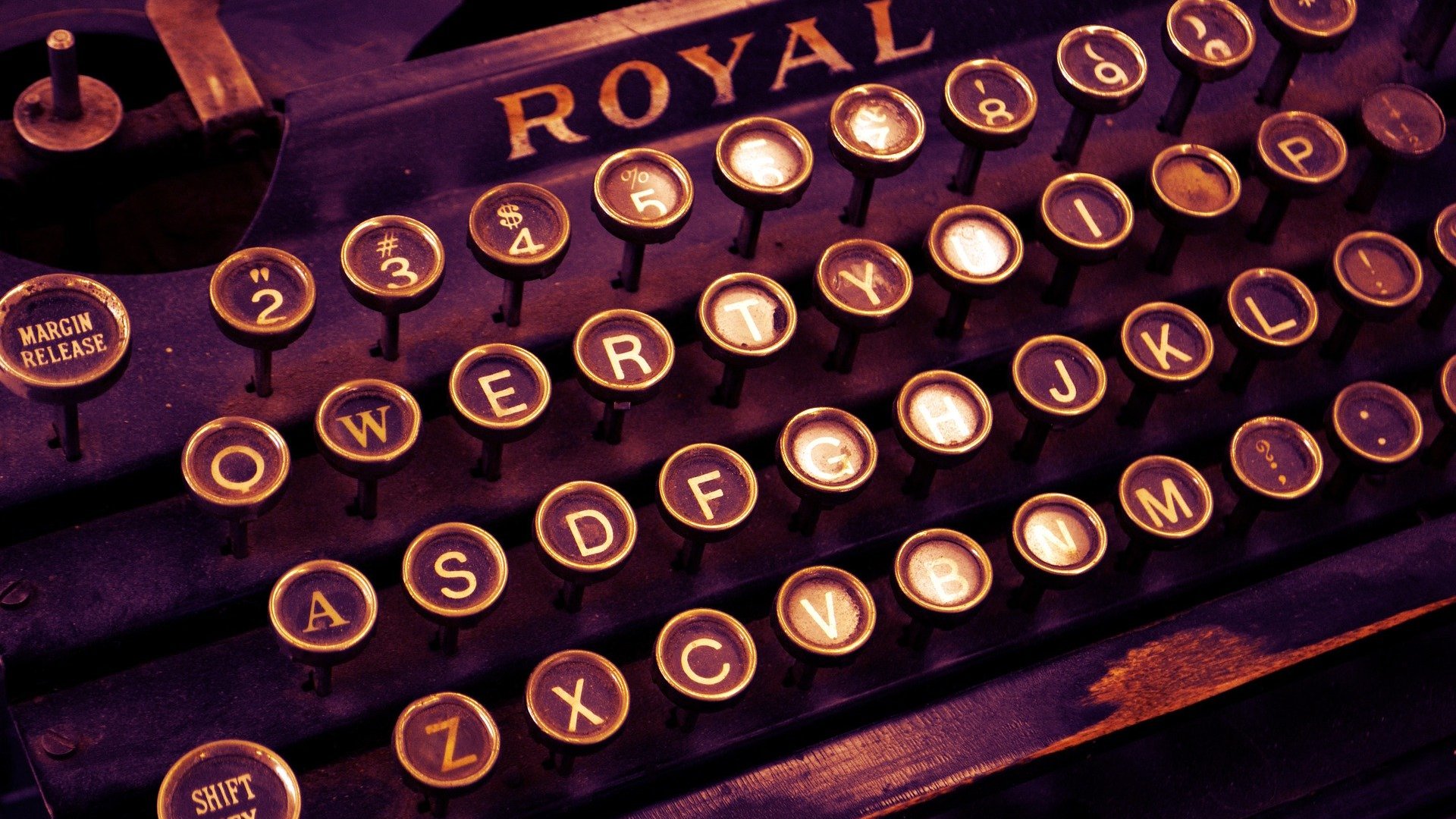
The Editing Company Inc.
Toronto, Ontario
RECENT POSTS
TEC Blog
Categories
Show All- Editing
- Grammar
- Usage
- Style
- Editor/writer
- Publishing
- Business
- Writing
- Writers support group
- Event
- Proofreading
- Copyright and permissions
- Usage
- Book reviews
- Editing new media
- Technology
- Books & libraries
- Ttc stories
- Editing & marketing
- Office happenings
- Social media & community
- Language & editing
- Social media
- Editing & marketing
- Indexing
- Book design
- Tec clients
- Guest blogger
- Creative women doing sixty
- Book clubs
- Books and reading
- Ebook technology & services
- Editing numbers
- Editing & technologies
- Opera, movies

The History of the QWERTY Keyboard: How It Came to Be
by Lesley-Anne Longo
Published at 2020-04-14
The QWERTY keyboard: You may have heard this term before, or said it (FYI, it’s “kwerty”) — but where did this specific layout of keys come from?
QWERTY: An Origin Story
Well, it all started in the 1860s. An amateur inventor/politician/printer/newspaper man in Milwaukee by the name of Christopher Latham Sholes often spent his spare time tinkering with and creating new machines to make his businesses more efficient. One of these inventions was an early model of the typewriter, which he developed with Samuel W. Soulé, Carlos Glidden, and James Densmore, and this invention was patented in 1868. The keyboard on this typewriter actually more closely resembled the keys of a piano, with the letters stretched out alphabetically, as it was the setup that the team assumed would be most efficient. It makes sense – having the letters arranged this way meant you wouldn’t have to hunt for any keys, you would always know where they were since they were arranged logically. So, why change things?
The Smithsonian explains it as follows:
The popular theory states that Sholes had to redesign the keyboard in response to the mechanical failings of early typewriters, which were slightly different from the models most often seen in thrift stores and flea markets. The type bars connecting the key and the letter plate hung in a cycle beneath the paper. If a user quickly typed a succession of letters whose type bars were near each other, the delicate machinery would get jammed. So, it is said, Sholes redesigned the arrangement to separate the most common sequences of letters like “th” or “he”. In theory, then, the QWERTY system should maximize the separation of common letter pairings. This theory could be easily debunked for the simple reason that “er” is the fourth most common letter pairing in the English language. However, one of the typewriter prototypes had a slightly different keyboard that was only changed at the last minute. If it had been put into production this article would have been about the QWE.TY keyboard.
QWERTY Becomes the Standard
So, the truth about the history of why the QWERTY keyboard came to be is a little uncertain. In any case, by the time 1873 rolled around, the typewriter featured 43 keys, all (rather counterintuitively) designed in such a way that would minimize the occurrence of breakdown — important, as typewriters were still quite expensive at the time.
Also in 1873, Sholes and his colleagues entered into a deal with Remington, the well-known gun-maker. Right before the first machine developed with Remington went into production, Sholes filed another patent — this time, for the familiar QWERTY keyboard we all know. Both the deal with Remington and the keyboard layout proved to be a huge success. In 1893, the top typewriter manufacturers merged to form the Union Typewriter Company, and agreed to feature the QWERTY keyboard as the standard design from that point forward.
But What Came First: Keyboard or Typist?
However, the keyboard’s design in relation to mechanical error has been questioned. As the Smithsonian explains:
In a 2011 paper, the [Kyoto University] researchers tracked the evolution of the typewriter keyboard alongside a record of its early professional users. They conclude that the mechanics of the typewriter did not influence the keyboard design. Rather, the QWERTY system emerged as a result of how the first typewriters were being used.
Either way, Sholes himself didn’t seem convinced that the QWERTY keyboard was the be-all, end-all, in the end. He continued his tinkering, and continued to invent improvements and alternatives to the typewriter for the remainder of his days, including a number of designs he deemed as more efficient than QWERTY.
Keyboard Alternatives & the Computer Age
Outside of Sholes competing against his own design, there have been others who have tried to create alternative layouts for the keyboard, one of the most famous of which is the Dvorak simplified keyboard, developed in the 1930s by Dr. August Dvorak. However, even as early as the 1930s, it was already too late to overthrow QWERTY.
You may point out the fact that now that computers exist, why do we stick with the QWERTY keyboard? Even if the reasoning behind the creation of the design (to prevent typewriters from jamming) has been debunked, computers can’t jam up in any similar fashion, so why keep the layout? Well, simply because the first generation of people to use both a typewriter and a computer learned to type on a QWERTY keyboard. It’s ubiquitous, and is now the technological standard.
However, a new generation of Sholes have continued to tinker with the already-efficient design, seeing if they can’t improve upon the entrenched giant. Here enters the KALQ keyboard. What makes this design so interesting is that it’s designed with mobile usage in mind — the whole layout is built around the modern practice of typing with our thumbs. However, it can be argued that no matter how the letters are arranged, any design will likely still feature letters and numbers, laid out in a grid pattern — a design originally created by Sholes and colleagues. But who knows what the future holds? I am intrigued by the system used by Asian countries on their mobile phones and tablets — a mechanism that allows users to draw the characters on a drawing section of the screen, which the computer interprets and then inserts as a character in a text message, or what have you. We’ll have to wait and see how the keyboard evolves as our usage of it grows and diversifies.
Thanks to the Smithsonian website for its in-depth research on the QWERTY keyboard!




